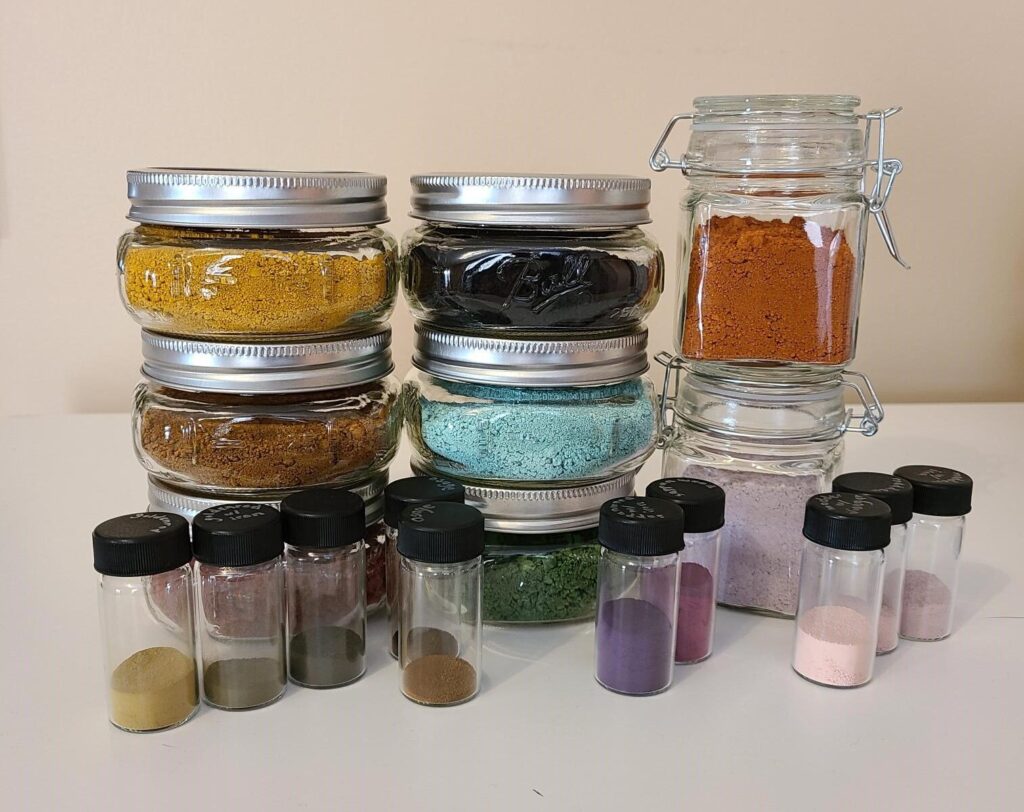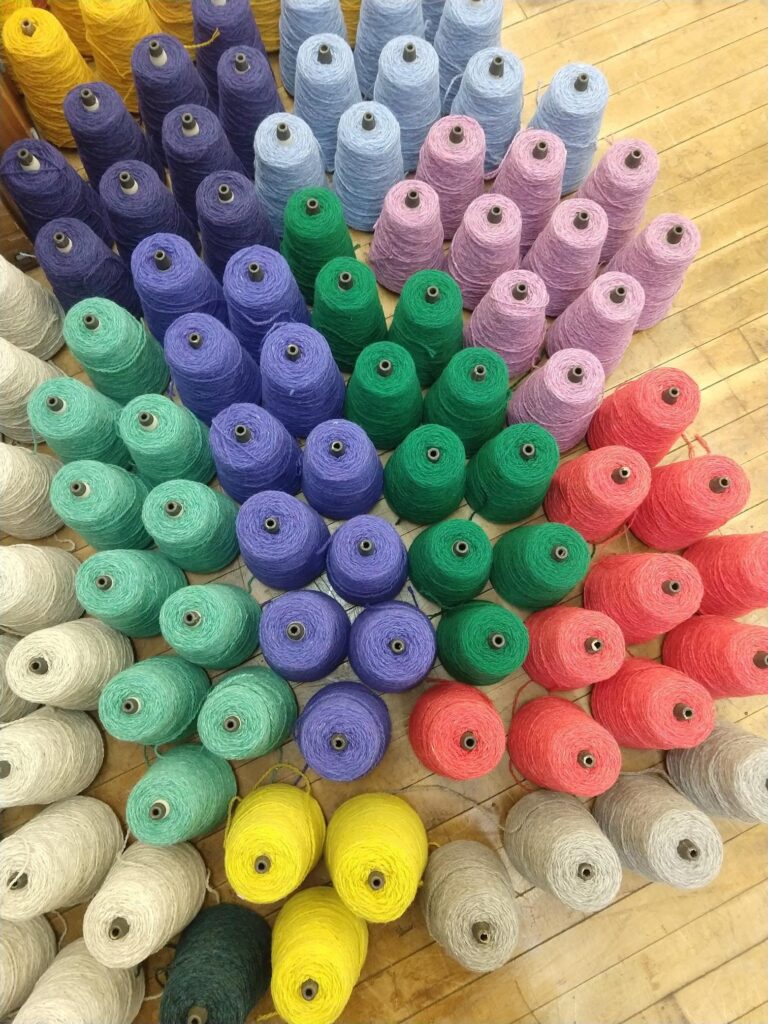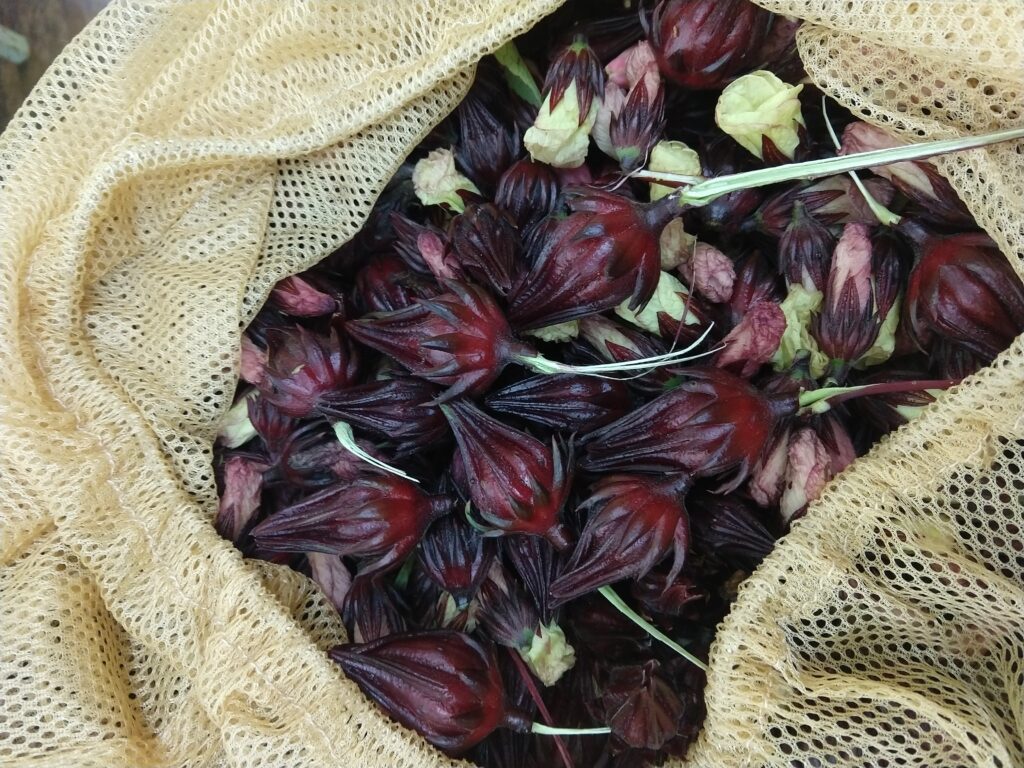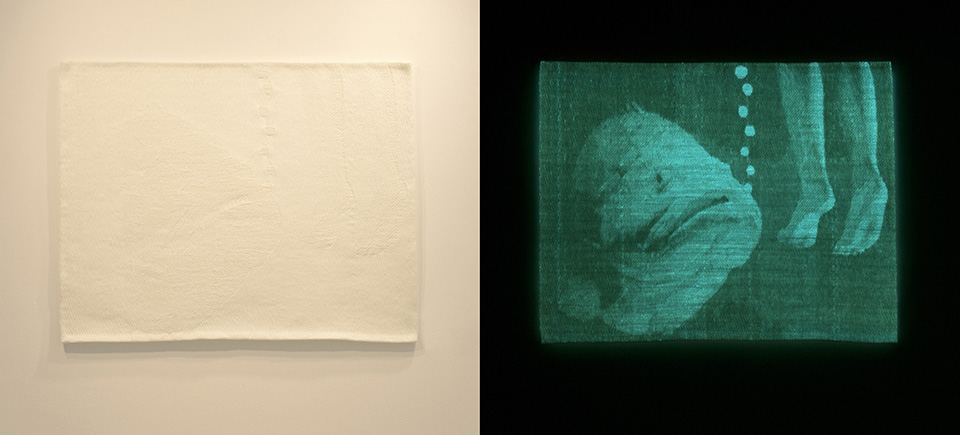With the new exhibition coming up we wanted to check on artists who participated in previous exhibitions, see what they are up to now and how participating in Fiberart International impacted them. If you are a previous Fiberart International participant and you would like to update the community on the happenings in your life, please contact Katie Bulova at bulovakatie@gmail.com
Written by Katie Bulova
Erin Miller – Fiberart International 2016
“We are all finding news way of connecting”
These are the words that Erin Miller spoke as she met with me for the first time over Zoom. Erin is a fiber artist who concentrates her practice on cloth and color. She was in a brightly lit studio in Kentucky on Berea College’s campus. I was in a makeshift basement studio in Pittsburgh with the washing machine running in the background. Talking with Erin, a 2016 Fiberart International participant, made me realize that even with the spin cycle, I was pretty lucky to be just where I was, talking with her.
While Erin is often immersed in the academic world as an educator, she is also a storyteller, memory keeper and innovator of her own artistic voice. The pandemic has allowed her to reflect on all of these callings. The solitude of 2020 also allowed her to find peace with her work and the methods that coax all of these paradigms together.
When the pandemic began, Erin was five months into a new position, head of weaving, in her new city in Berea, Kentucky. Her academic and professional career had already woven a path through Kent State in Ohio to Eastern Michigan University in Ypsilanti, and down to her first teaching position in East Carolina University in Greenville, North Carolina.
Now in the rolling green, landscape of Appalachia, she worked alone in the quiet of a pandemic style university art studio. She remained isolated from March through August 2020. It was during this time, the foundation for her works for her upcoming show were established.

By September, technology, creativity and adaptability allowed academic work, now distanced and masked, to be possible. Students returned to campus. The weaving studio returned to production, though with fewer gathered together.
Berea College is unique in its longstanding tradition of tuition free education. Students work and create products for sale in the community. As the head of the weaving department, Erin leads students in production of several products.
In Erin’s studio, she organizes a team of students who make, design and market such items as pillows, rugs, placemats and baby blankets. As her leadership began, she sought to offer more dynamic inclusion of student led design initiatives. For example, one idea that emerged was the need to offer more than gender neutral colors for items such as baby blankets. Using a more collaborative approach, her department now offers blankets for sale that represent the four basic elements. The bright colors of the yarn for Berea projects are created, in part, by the Berea Campus Farm’s new natural dye garden. This garden was a project initiated by Erin.

As for those quiet, early pandemic months? Erin has created a retrospective body of work entitled “Sister Quilts”. Erin’s art contemplates those and what she holds dearest. Erin feels that line and geometry are the anchors that re-ground her practice. “Going back to basics” with piecing and making is what she calls quilting. Erin’s “Sister Quilts” go back to the basics of what is important in her life and her practice.
“Sister Quilts” integrate colors and fibers that she self-fabricated over the years. The quilts also tell a story of her textile education. Through her artistic practice Erin learned how to fabricate glow-in-the-dark fibers. From a residency in Scotland, she learned the basics of natural dyeing. Her works created this year integrate the natural fibers with glow-in-the-dark yarn. Erin’s tools, her fabric, threads and yarns, include threads that have been dyed with colors gathered from a walk with a friend on a southern path or threads carefully dyed with pigments long hoarded with an idea for the future.
Each path, each friend, each memory, each color is woven to tell the story of where her practice is now. Using her own textile inputs in this manner allows her art to tell a story that reimagines its ending over and over. Wouldn’t we all like to explore our own story with many different endings?
Erin Miller is a fiber artist who articulates memories and stories through color and line. The textiles that she creates carry the stories of friends who walked the trails with her to collect natural dyes. Her small pieced quilts capture the stories of loved ones now far away.

Erin Miller’s upcoming show will be viewable at the Parachute Factory in Louisville, Kentucky early this summer. She is also planning to apply to Fiberart International 2022.
From Erin:
What participating in Fiber Arts International has meant for me:
When I participated in Fiber Arts International (2016), I had recently graduated with my BFA and was beginning my MFA. I submitted my work as I was transitioning to a new city to continue my education. My inclusion in FIA 2016 during that time of change contributed to both a huge shift in my work and my methods of making.
It was exciting to be recognized for a body of work early on in my practice.
Prior to FAI 2016, I had spent a significant amount of time researching phosphorescent (glow in the dark) materials. The piece that I showed at FAI was a phosphorescent weaving. After FAI 2016, I allowed myself to break free from the phosphorescent materials, and I re-introduced other processes.
I think more than anything, seeing my work in such a materially and technically diverse exhibition affirmed that I was not comfortable with being known for just my work with one technique or material. I realize that the conceptual process is just as significant in the presentation of work as the technical process. I am now 4 years post MFA and a professional designer and educator; however, I still consider myself a weaver.
I also remember visiting the exhibition during the opening reception, and not seeing a very diverse crowd. So much has changed in the world of fiber art in the past 6 years, that has made our field more welcoming to underrepresented populations, but that also has contributed to my dedication to equitable education and skill-sharing. As a queer white woman, I have often found that I am the only marginalized person in a group of cisgender, heterosexual white men serving in the field of academic education; I am committed to changing that. The history of fiber art is synonymous with the history of BIPOC and queer folks, and I hope that through nurturing an upcoming generation of artists, designers, and art appreciators, that our field continues to grow.
Erin Miller: http://www.erinrmiller.com/
Parachute Factory: http://www.parachutefactorylex.com/
Berea College Student Craft page: https://bcstudentcraft.com/
Berea College Craft Shop: https://www.bcshoppe.com/student-craft/
If you are a previous Fiberart International participant and you would like to update the community on the happenings in your life, please contact Katie Bulova at bulovakatie@gmail.com

